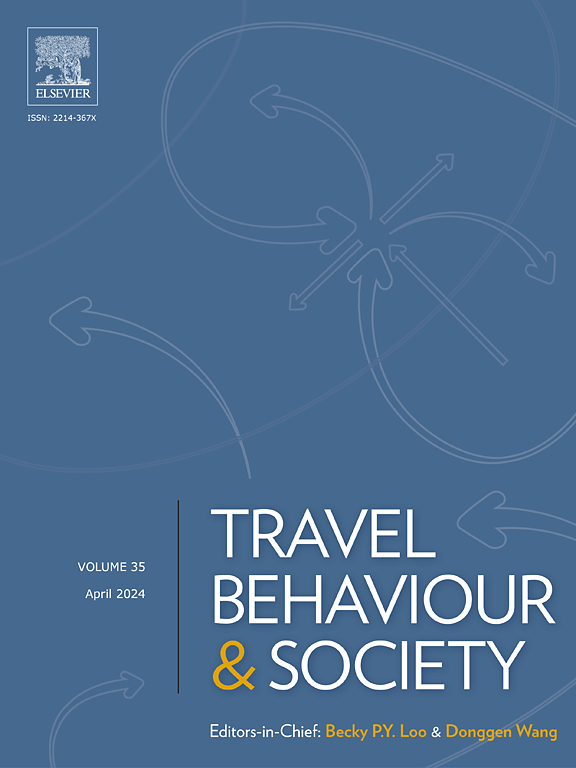大都市地区中学后学生的模式选择行为建模:基于动态游览的方法
IF 5.1
2区 工程技术
Q1 TRANSPORTATION
引用次数: 0
摘要
本文重点研究了大多伦多和汉密尔顿地区(GTHA)大专学生的旅游方式选择模式。本研究的数据来自于在大多伦多和汉密尔顿地区进行的一项详细的在线调查。根据调查数据,采用动态离散选择建模方法估算了两程游和三程游的模式选择模型。模型结果反映了该地区学生复杂的旅行行为,可以看出,旅行时间、距离、成本和个人偏好会影响学生在不同类型的旅行中选择哪种旅行模式组合。与自驾游相比,留学生更倾向于选择交通方式。就读于城市院校的学生则会灵活选择驾车或乘坐公交车,兼职学生也是如此。女生在选择交通工具时的偏好取决于她们的年龄段。年龄相对较小的女学生在乘坐公交车方面比较灵活,而年龄相对较大的女学生则更喜欢开车。政策情景分析显示了一种有趣的模式选择偏好趋势。在任何不可避免的情况下,如果出行距离增加,学生的偏好会从乘坐公交车变为开车,但出行时间的增加会使他们转向乘坐公交车而不是开车。本文章由计算机程序翻译,如有差异,请以英文原文为准。
Modeling mode choice behavior of postsecondary students in large metropolitan area: A dynamic tour-based approach
This paper focuses on the tour-based mode choice pattern of the post-secondary students of the Greater Toronto and Hamilton Area (GTHA). The data for this study was collected from a detailed online-based survey in the GTHA. Based on the survey data, the mode choice model for two-trip tours and three-trip tours is estimated using a dynamic discrete choice modeling approach. The model results capture the complicated travel behavior of the students of this area, and it is seen that travel time, distance, cost, and personal preferences influence a student to make the decision as to which tour-mode combination they would choose for different types of tours. International students are seen to choose transit more over driving. Students going to urban institutions are flexible in taking both driving and transit, and it is similar for part-time students too. Female students have mode choice preferences based on their age range. Female students who are comparatively younger are flexible in taking transit, whereas relatively aged female students prefer driving more. Policy scenario analysis reveals an interesting trend in mode choice preference. In any unavoidable situation, students’ preference changes from taking transit to driving if travel distance increases but an increment in travel time makes them shift toward taking transit instead of driving.
求助全文
通过发布文献求助,成功后即可免费获取论文全文。
去求助
来源期刊

Travel Behaviour and Society
TRANSPORTATION-
CiteScore
9.80
自引率
7.70%
发文量
109
期刊介绍:
Travel Behaviour and Society is an interdisciplinary journal publishing high-quality original papers which report leading edge research in theories, methodologies and applications concerning transportation issues and challenges which involve the social and spatial dimensions. In particular, it provides a discussion forum for major research in travel behaviour, transportation infrastructure, transportation and environmental issues, mobility and social sustainability, transportation geographic information systems (TGIS), transportation and quality of life, transportation data collection and analysis, etc.
 求助内容:
求助内容: 应助结果提醒方式:
应助结果提醒方式:


